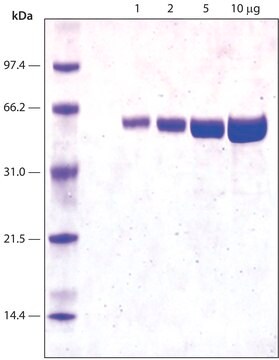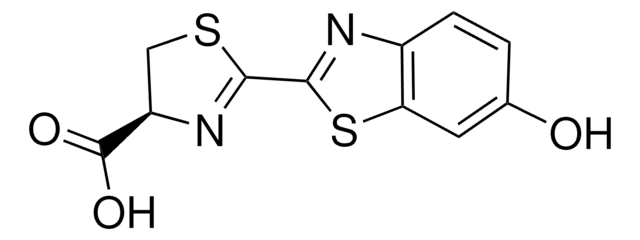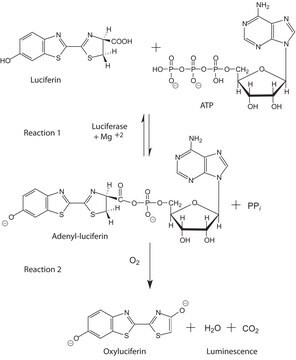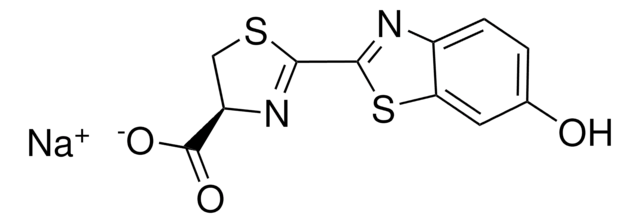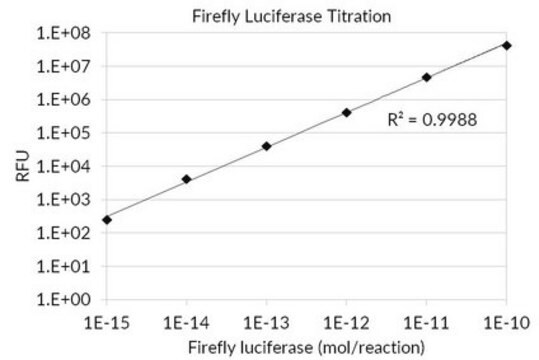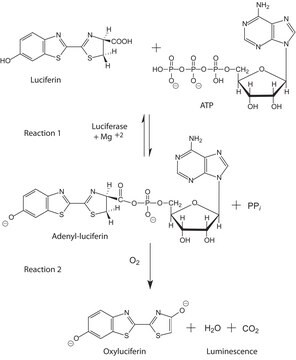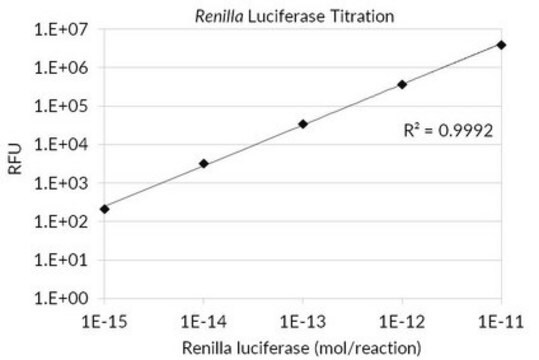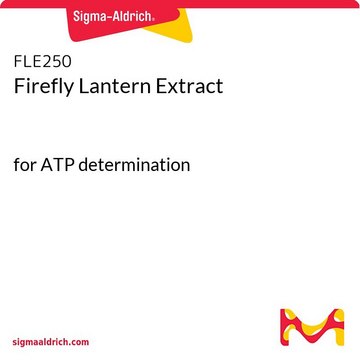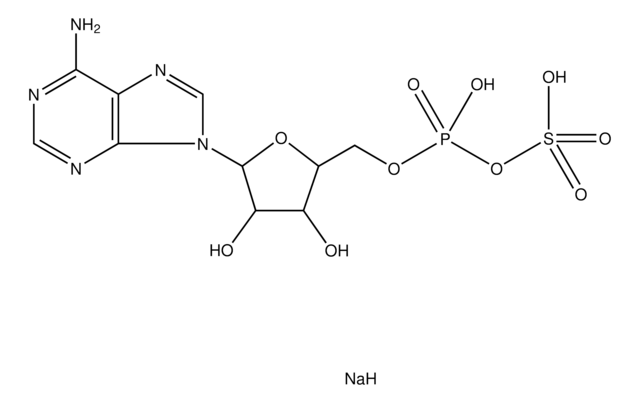L9420
Luciferase from Photinus pyralis (firefly)
recombinant, expressed in E. coli, buffered aqueous solution, ≥10×1010 units/mg protein
Synonym(s):
Luciferase firefly
About This Item
Recommended Products
recombinant
expressed in E. coli
Quality Level
assay
≥98% (SDS-PAGE)
form
buffered aqueous solution
specific activity
≥10×1010 units/mg protein
mol wt
62 kDa
shipped in
dry ice
storage temp.
−20°C
Looking for similar products? Visit Product Comparison Guide
General description
Application
Unit Definition
Unit Definition Conversion Factor: There are approximately 9000 Relative Light Units (RLU) per one traditional Light Unit that uses a peak height equivalent to 0.02 μCi of 14C in a PPO/POPOP cocktail.
Physical form
signalword
Danger
hcodes
Hazard Classifications
Acute Tox. 4 Oral - Resp. Sens. 1 - STOT RE 2 Oral
target_organs
Kidney
Storage Class
10 - Combustible liquids
wgk_germany
WGK 3
flash_point_f
231.8 °F
flash_point_c
111 °C
Certificates of Analysis (COA)
Search for Certificates of Analysis (COA) by entering the products Lot/Batch Number. Lot and Batch Numbers can be found on a product’s label following the words ‘Lot’ or ‘Batch’.
Already Own This Product?
Find documentation for the products that you have recently purchased in the Document Library.
Customers Also Viewed
Articles
Bioluminescence imaging (BLI) systems allows for high-sensitive and noninvasive monitoring of cell proliferation, activity of signaling pathways and protein-protein interactions in living tissues.
Firefly luciferase is a widely used bioluminescent reporter for studying gene regulation and function. It is a very sensitive genetic reporter due to the absence of endogenous luciferase activity in mammalian cells or tissues.
Our team of scientists has experience in all areas of research including Life Science, Material Science, Chemical Synthesis, Chromatography, Analytical and many others.
Contact Technical Service